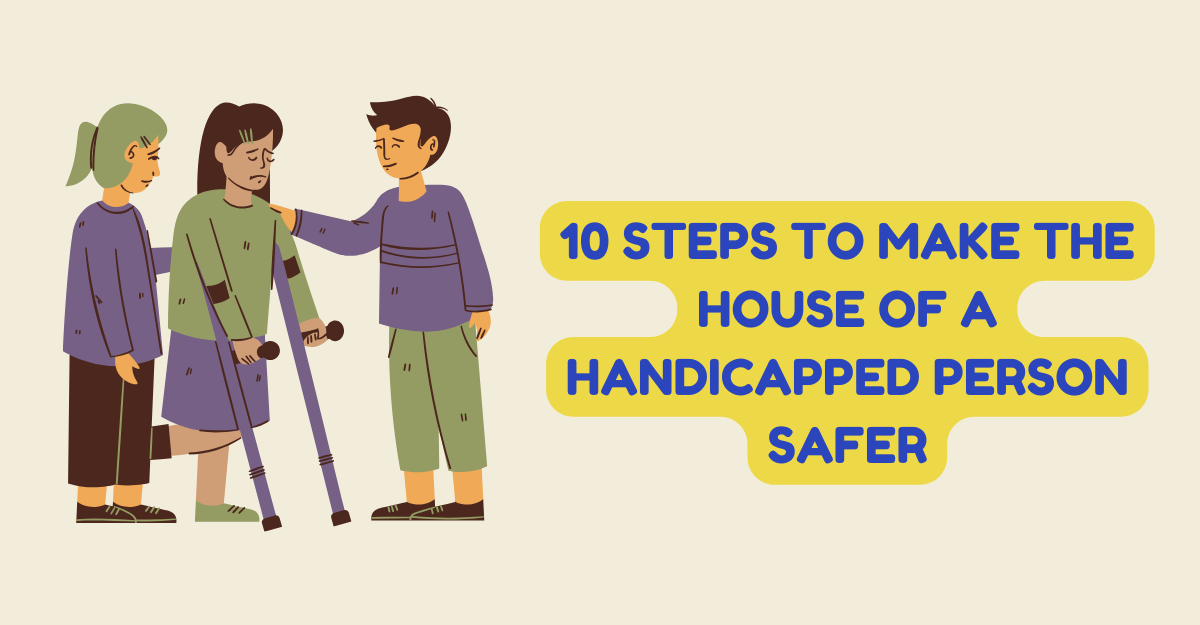
Steps to Make the House of a Handicapped Person Safer
Creating a safe and accessible home environment is paramount when living with a disability. Such adaptations not only foster independence but also prevent accidents and improve the overall quality of life. It’s within this context that ensuring a secure bathing experience becomes crucial, particularly with the assistance of devices like a bath lift chair. This article will walk you through the essential steps to make a handicapped person’s house safer, emphasizing the critical role such equipment plays in maintaining dignity and safety in the bathroom.
Assess the Overall Home Environment
The first step requires a thorough assessment of the entire residence. Examine each area for potential hazards and consider both mobility issues and the specific needs of the handicapped individual. It is through this comprehensive review that you’ll be able to identify where modifications are necessary.
Secure the Flooring
Slippery floors are one of the leading causes of home accidents. Opt for non-slip flooring solutions throughout the house, especially in areas prone to wetness, such as the bathroom and kitchen. Non-slip mats and carpeting can also be effective in providing additional grip and stability.
Install Proper Lighting
Adequate lighting is essential to navigate safely around the house. Ensure that all rooms, hallways, and staircases are well-lit to prevent tripping or stumbling. Consider installing motion-sensor lights for added convenience and safety.
Modify the Bathroom for Accessibility
The bathroom is often considered one of the most hazardous areas for handicapped individuals due to its slippery surfaces and tight spaces. Therefore, making necessary modifications to ensure accessibility and safety is paramount. Installing grab bars strategically throughout the bathroom provides essential support and stability for individuals with mobility limitations. These bars offer assistance when moving in and out of the shower, toilet, or bathtub, significantly reducing the risk of slips and falls.
Furthermore, incorporating a shower seat and converting the shower into a wide-entry space with a flat threshold enhances accessibility and convenience. A spacious shower area allows for easier maneuverability and accommodates individuals using mobility aids such as wheelchairs or walkers. Additionally, the inclusion of a shower seat provides a secure and comfortable seating option, enabling individuals to shower safely while conserving energy and reducing the risk of fatigue.
In addition to these modifications, integrating a bath lift chair into the bathroom enhances safety and independence for individuals with limited mobility. This innovative device lowers individuals safely into the bathtub and raises them back up, eliminating the need for strenuous transfers and reducing the risk of falls. By addressing the specific needs of handicapped individuals, these adaptations transform the bathroom into a secure and accessible space, promoting confidence and autonomy in daily activities.
Optimize Doorways and Hallways
Widening doorways and clearing hallways can provide easier access throughout the home. Door levers often prove more manageable than doorknobs, especially for individuals with limited hand functionality.
Adapt the Kitchen
Adapting the kitchen is crucial to enhance the safety and functionality of the living space for a handicapped person. Lowering countertops and installing accessible cabinets not only provide easier access but also ensure independence and comfort. A wheelchair user can efficiently navigate the kitchen without obstacles, allowing them to prepare meals and engage in daily activities with ease.
Moreover, incorporating stoves and sinks with front controls is essential to prevent accidents and minimize the risk of overreaching. By positioning controls within reach, individuals with mobility limitations can safely operate kitchen appliances without straining or compromising their stability. This thoughtful adjustment not only enhances safety but also promotes confidence and autonomy in the kitchen environment.
Additionally, installing lever-style faucets and easy-to-grasp handles on cabinets and drawers further enhances accessibility. These modifications eliminate the need for strenuous twisting or gripping motions, accommodating individuals with limited dexterity or strength. By prioritizing accessibility in the kitchen design, caregivers and family members can create a supportive and inclusive environment that fosters independence and well-being for their loved ones with disabilities.
Enhance the Bedroom for Safety and Comfort
In the bedroom, consider the height of the bed and the accessibility of nightstands and dressers. Bed rails might also be a worthwhile addition, aiding in transfer and preventing falls.
Safeguard Stairways
For houses with multiple levels, stair lifts or platform lifts can be life-changing adaptations, ensuring safe access to all areas of the home. Additionally, sturdy railings on both sides of the stairwell further enhance safety.
Invest in Smart Home Devices
Automation can greatly assist those with disabilities. Smart home devices, such as voice-activated systems, can control lighting, heating, and locks, streamlining the daily routine without the need to physically maneuver switches or dials.
Plan for Emergencies
Last but not least, establish clear plans for emergencies. Accessible escape routes, functioning smoke alarms, and an emergency communication plan are all critical components of a safe home environment.
Tailoring a residence to suit the needs of a handicapped person requires attention to detail and a commitment to safety. By incorporating these steps and acknowledging the significance of tools like a bath lift chair, you will not only enhance safety but also empower individuals with disabilities to lead more autonomous lives. As we continue to make strides in accessibility and inclusive design, the cornerstone of a safe and welcoming home environment becomes even more attainable. Remember, a secure home is a foundation for a life lived with confidence and independence.






